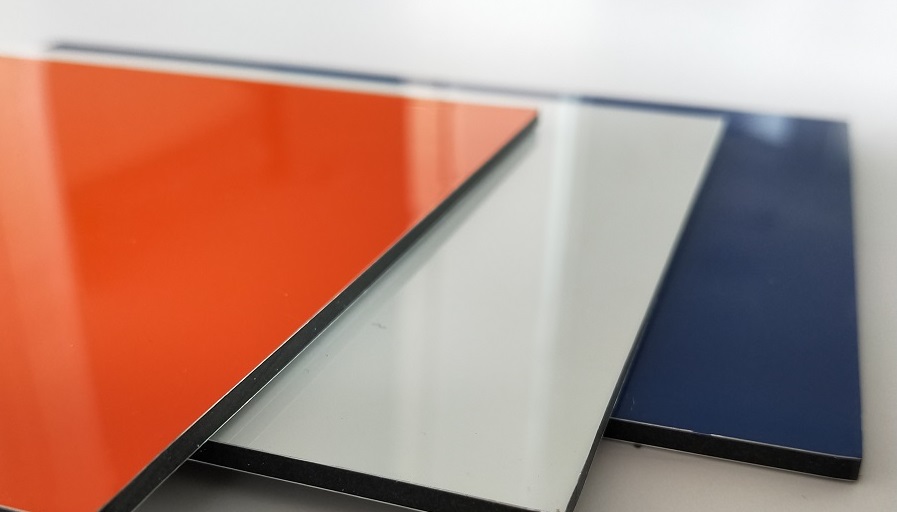The Global Aluminum Composite Panel Market size is anticipated to attain a significant size in terms of value by 2025. Increasing number of construction projects and growing global population are likely to stoke the growth of the market. Besides this, rapid urbanization and rising consciousness among people for environment conservation are contributing to the growth of the market.
Increasing use of aluminum composite panels in mass transportation systems in cities is also expected to encourage the development of lightweight and cost efficient products. In addition, ACP can be produced in a wide range of metallic and non-metallic colors as well as in varied patterns that emulate other materials such as wood or marble. Surge in demand stems from various advantages offered by these panels including lightweight, efficiency, easy maintenance, reduced fuel consumption, and subsequently decreased carbon emissions.
While adding visual appeal to application areas, ACPs are extremely lightweight owing to structural design of a low-density core inserted between two relatively thin skin layers. Therefore, they help in reducing load of buildings and construction sites, while ensuring strong and sturdy support to the structure.
Panel rigidity is provided by interaction of its components under flexural load. Low-density polyethylene or a mix of polyethylene & mineral material in the core exhibit properties of fire retardants, which reduce maintenance costs arising from corrosion. They require easy maintenance in almost any kind of climate through a regular wash with water and mild detergent, ensuring long lasting performance. Further, their attractiveness and usefulness increase as they are resistant to acid, alkali salt spray, and pollution at the same time providing good thermals and sound insulation.
Moreover, growing use in public transportation systems, aircraft, and external and internal building architecture is projected to have a positive impact on the growth prospects. Mass rapid transport systems, intercity transportation services, bus facilities, and monorails, among others, are gaining popularity owing to cost effectiveness, safety, and time convenience. In building architecture, the product can be used for false ceilings, partitions or claddings, signage, machine wrappers, and container constructions, among others. For applications pertaining to signage, it is used as an alternative to heavier and high price substrates.
Flexible and easy forming and processing of aluminum composite panels allows innovative designs and are used as a lightweight and sturdy material in transient structures such as trade show booths and other temporary structures. Growing use of these panels as backing material in mounting fine art photography is increasing their prominence as an aesthetical product.
Browse Details of Report @ https://www.hexaresearch.com/research-report/aluminum-composite-panel-market
Nano self-cleaning composite panels, which have better self-cleaning function compared to traditional polyvinylidene fluoride (PVDF) variants, are likely to shape the future of the market. Nano self-cleaning aluminum sheets prevent formation of dust and black marks on surface of sheets even after considerable use, which is stirring up their demand.
ACPs with acrylic finish using processes such as Diasec increase the artistic appeal of the product. Aluminum composite panels conform to internationally-accepted energy conservation building code (ECBC), according to which buildings must conserve energy. Airspace created between the panel and the wall helps in better insulation and energy conservation.
Due to price volatility in the London Metal Exchange, the future exchange for base metals and other metals leads to uncertain prices of aluminum at different points of time and poses a significant challenge for vendors. Lack of standardization of pricing of aluminum composite panels owing to uncertainties in the market prevents the product from penetrating into emerging economies. Further, flammability of core non-aluminum material poses significant problems to its usage. These factors are limiting the aluminum composite panel industry from realizing its utmost potential.
Some of the key types of coating used for aluminum composite panels are polyvinylidene fluoride (PVDF), fluoropolymer resins (FEVE), and polyester paints. These panels are primarily used across industries such as building and construction, aviation packaging and building, automobiles, commercial transportation, oil and gas, and defense. Building and construction is expected to be one of the prominent end users over the forecast period.
China is a significant revenue contributor in the global aluminum composite panel market. Rising number of construction projects and being the biggest recipient of Foreign Direct Investments (FDIs) from around the world, the market in China is anticipated to expand at a noteworthy growth rate during the forecast period. Favorable atmosphere for business and investments in South Asia and India is expected to positively influence the growth of the overall market. Rapid urbanization and rising disposable income are anticipated to boost the demand for aluminum composite panels. Political scenario and current policies in Japan are encouraging private investments, which in turn will fuel growth prospects over the forecast period.
Primary vendors include Alcoa, Alcobond, Alubond, Guangzhou Xinghe, Jyi Shyang Industrial, and Kaidi Industry. Vendors are investing in development of new technologies, R&D facilities, and keeping up with emerging trends to sustain competition in the market. Innovative products and financial expertise are some of the key strategies adopted by vendors to render competitors’ products non-competitive in the pre-launch period itself, even before they can recover commercialization costs.
Browse Related Category Market Reports @ https://www.hexaresearch.com/research-category/advanced-materials-industry


 Log in with Facebook
Log in with Facebook 





